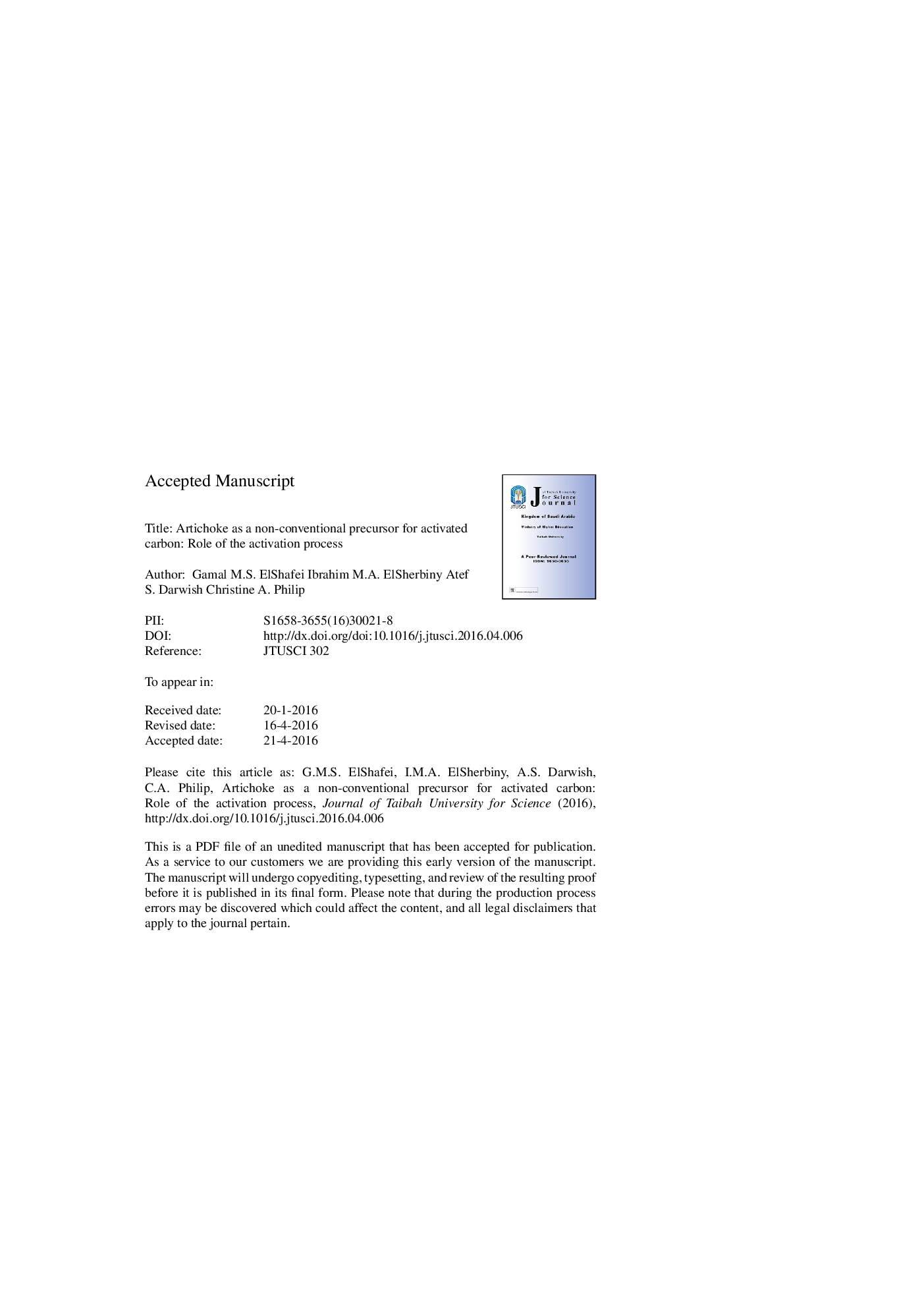| Article ID | Journal | Published Year | Pages | File Type |
|---|---|---|---|---|
| 5143479 | Journal of Taibah University for Science | 2017 | 21 Pages |
Abstract
Artichoke peels were used to produce activated carbon using chemical activation methods. Two activation protocols were compared: a two-step method A and a one-step method B. As newly used activating agents, KCl, CrCl3 and TiCl4 were compared. The results show that method B is superior to A. KOH with method B had an area of 2321Â m2/g and a total pore volume 1.0071Â cm3/g, of which 0.9794Â cm3/g was confined to micropores. The corresponding values for KCl are 1731, 0.6925 and 0.6718. TiCl4 had lower but comparable values with those of KCl. CrCl3 appeared to be the least successful among the three newly used activating agents. The post-activation washing step strongly affects the characteristics of the final product. The differences among the effects of Zn, Cr and Ti are discussed in terms of the differences in polarizing power.
Keywords
Related Topics
Physical Sciences and Engineering
Chemistry
Chemistry (General)
Authors
Gamal M.S. ElShafei, Ibrahim M.A. ElSherbiny, Atef S. Darwish, Christine A. Philip,
